How I Got Published at the Edge of Yesterday
A deep dive into historical fiction | Article 5 of 7
Are you an aspiring writer who has a concrete goal to (one day, eventually!) ‘get published’?
Do you have experience in the world of traditional publishing but have become jaded with the industry that appears to promise wealth and success - yet seemingly only for a tiny, tiny minority?
Perhaps, like me, you’re dipping your toe into the water of writing for a broader audience and are intrigued by the possibility of having your book out there on physical or virtual book shelves…
If you are any of these people - and even if you’re not - welcome here!
I’m Holly, if we haven’t met before, and I write about all things medieval history/archaeology and historical fiction. I am passionate about writing creative stories that engage a range of audiences in discussions of the past that overcome cultural stereotypes, which means that I seek out subjects and characters that aren’t what usually make it into the history books. If that sounds like you, do make sure to join our community of readers and writers, where we connect regularly over books, biographies, historical discussions, and Q&A/ask-me-anything chats.
This is the fifth post in my current series taking a deep dive into the world of historical fiction.
Specifically, why we write/read it, how to get published in it, and what we think are the best examples out there, on and off Substack. You can read previous posts in this series at the link below.
What to do - one author’s experience
Today’s article has kindly been put together by
, whose newsletter is shared on Substack. Robin has written multiple books in the YA time-travel genre, building up a wealth of experience to share with readers who aspire to be published (as well as compare with those who have had similar or different journeys on the writing path). She describes herself as:Storyteller. Time traveler. Neuro-mystic. Author: Edge of Yesterday time travel adventure series. [Re]member the World (ancestor memoir in-progress).1
How I Got Published at the Edge of Yesterday
I often tell readers, young people I work with, and their teachers and parents that I am a time traveler. And it’s true, not only because I’m the author of the Edge of Yesterday YA time-travel adventure series.
It is through my books that I am able to take deep dives into history: Renaissance Florence where my young, GenZ STEMinista protagonist, Charley, gets an up-close-and-personal interview with Leonardo da Vinci. Enlightenment France to meet physicist, mathematician and philosopher Emilie, the Marquise du Châtelet and her science partner, Voltaire (who Charley initially meets during an unfortunate and wrongheaded imprisonment in the Bastille). And Roaring ‘20s New York, to see the first Macy’s Christmas Parade and meet up with a shining star of the Harlem Renaissance, author and anthropologist Zora Neale Hurston, to name but a few.
My long journey from writing-to-publication has been, in-and-of-itself, something of a time travel adventure. I began writing Edge of Yesterday as a screenplay, way back in the days when the internet (and my third child) were just entering the world.
During this period, historical research, even for an icon like Leonardo da Vinci, was mainly done at libraries. It was time consuming, especially for an aspiring writer juggling a full-time job, three young children, playdates, and carpools.
And teaching myself the form of screenplay writing. Why a screenplay? Edge of Yesterday always felt cinematic in scope—grand settings, dramatic scenes full of fire and brimstone and witchcraft, magnificent art and architecture, and larger-than-life historical characters. Writing for television was a new challenge: could I work within the structure and strictures of crafting a story arc, and character development that would fit into a 90-minute big-screen adventure?
I am also a science writer. Meaning I had to make the physics of time travel to the distant past plausible. At the time of first writing, physics was in something of an early-quantum trough. Einstein called it “spooky action at a distance.” New discoveries in the quantum realm were beginning to transform our understanding of sub-atomic particle reality. So creating a technology for a STEM-genius and Leonardo wannabe like Charley, her time machine technology—and time travel itself—had to be sophisticated enough to consider the science, but simple enough for a middle school reader.
Because I couldn’t even figure out whether time travel was possible at the time, I put the screenplay in a drawer for a long time. It would take the confirmation of the Higgs boson (faster-than-light particles) and the invention of the smart phone before I could figure out the quantum probabilities that would enable Charley to travel lifetimes back—and not get stuck in history.
I had to make the physics of time travel to the distant past plausible.
Many drafts and rewrites later, I finally had a finished screenplay. But then, without Hollywood connections, and living in Maryland in the U.S., I had few prospects of making any.
One of my story advisors at the time suggested I turn it into a novel. Book publishing seemed way more possible than cutting a film deal.
Get the agent
So another series of rewrites, this time, into novel form. Publishing, in those wayback times, was a very different ballgame. To get into a big publisher (there were more than what is known as the Big 5 today in the U.S.), one needed an agent.
Getting an agent was a big effing deal.
Early on, I had a bit of beginner’s luck. The head of the nursery school my kids attended in the earliest incarnations of writing (spoiler: they are all now in their 30s!) had a cousin who was a bona fide New York literary agent, well-connected in the industry. She read my manuscript and took me on as a client.
Her process went like this: she’d send out a handful queries and the manuscript targeted to editors she knew worked on YA books at the Big 5 publishers (or however many there were back then), and wait for a response.
This took eons, at least in my experience of it. I had to constantly be on her to call around and check to see where my manuscript was in the slush pile. When she finally got a rejection (ultimately, they were all rejections), she’d send it along to me.
And then, the final letter: I am afraid no one is buying what you’re selling. I can no longer represent your work.
So goodbye agent!
I considered self-publishing but, back-in-the-day, there were only “vanity presses” which were distinctly looked down on. Up until the early 2000s, people publishing with a vanity press were, as the name shows, doing it mainly out of vanity. Not credible.
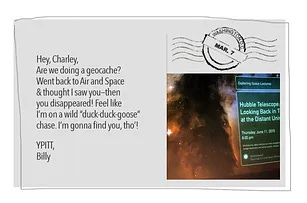
I took time off to do things like family, career, other writing projects, life. Once life settled down a bit, I rewrote, retooled and then wrote a few more drafts.
By this time, the industry looked different. Unlike Ye Olde Vanity Press, there were new routes beyond the agent representation/Big 5 that were considered legitimate, including indie presses, small presses, hybrid publishing, and Amazon. University presses can be a great choice for books with a more academic tone, but that was not where Edge of Yesterday fit.
These other options would be my fallbacks to the possibility of getting a new agent. After all, these were different times. And my book substantially improved.
I was prepared, or so I thought.
Agent querying is not for the faint of heart. It takes persistence and a strong stomach for rejection. The process goes like this: write a query letter that includes a brief pitch (usually under 200 words), a summary of your book, and a strong bio, including other places you’ve been published. Add in authors and titles that compare to yours. With a query, some agents will read the first ten pages, others the first three chapters.
I was prepared, or so I thought. I sent out queries to a handful of agents who handled, in my case, YA fiction. For the first ten, I got a few bites, asking me to send the completed manuscript. It felt to me like this was a green light. Surely one would stick.
Note to newbies to publishing: the agents themselves are generally not your first-line readers. They give them to young, underpaid, fresh out of college English majors, known as literary assistants, to screen. If the assistant doesn’t love the story, the agent may never see it.
More waiting. More rejections.
Maybe there was trick to this. I met with an agent coach who formerly ran his own New York literary agency. He advertised how he helped authors craft and finetune their query letter, the logline, the book summary, the author bio, and coached them to stay in the game, despite lots of rejections.
This guy knew the biz and, as a coach, he had the skills to keep me going as long as it took. He also offered a long, comprehensive and up-to-date list of agencies, agents and their interests in almost every genre, and whether they were currently taking on new authors, making the agent search a little less like a shot in the dark.
Agent speed-dating
At the same time as I was preparing a new query letter and setting up a list of accredited agencies and agents (writer beware: agents get paid by the publisher when a book is optioned. There are agents who are not legitimate and who may ask you to pay them in advance, or misrepresent their experience), I learned about another possible avenue to an agent: a literary event that included speed-dating with agents.
The meetup I attended offered, for the price of admission, meetings with up to four agents. You had ten minutes to pitch your book, and answer follow up questions. They could then decide if they were interested in reading your manuscript.
There were at least 75 other authors at this event, representing many genres, doing the same thing I was. I had rehearsed my brief pitch, and knew enough to leave an agent wanting more. Again, I was lucky. All four were interested. One agent I met in particular: she was Charley’s agent. I felt it in my bones.
Then, it’s go home and do the follow up. And wait.
But querying didn’t stop. Another round and 97 queries later, including twenty requests to send the full manuscript: “We love your writing but we just can’t sell historical fiction/time travel. No one’s buying YA in your genre.”
My agent coach said, “You’re so close. Keep going.”
I said, “Can’t wait. Charley’s gotta get out in the world. Now that she’s cracked the code to time travel, she has many other Renaissance people to meet, to learn their polymathic secrets. And she’s got to share everything she’s learned with modern-day teen readers.”
Pitch Week
But I didn’t know where to turn next. A friend told me about a new writing competition, and gave me an intro to his buddy, who had started a writing retreat in Vermont and a publishing “reality show” contest. They were getting ready to run their second Pitch Week Competition. First prize: a publisher, an agent and a publicist to bring your story to the world.
I entered.
Out of a hundred entries, six authors were invited to compete, me among them. We had a long preparation period, during which we had to write a pitch, a logline, and visuals to do a live presentation to the panel, made up of the above-mentioned literati. What’s more, we had to create our own marketing plan. Because if you have a book and no after-launch plan, no publisher’s going to create one for you. And part of that plan needs to be about your platform—a website, a social media presence, and building your credentials before you even submit.
No matter the outcome, I figured all of the preparation would be worthwhile. I’d be making connections and building visibility. It would eventually lead somewhere.
Finale: Charley’s adventure moves into print
I came in a very close third. Close, but not yet a publisher-agent-publicist. I was elated and disappointed at the same time. Charley was itching to get out there in the GenZ world and show them how girls could compete and win in the mostly-male STEM world. Their ticket to the future.
I took matters into my own hands. I went hybrid with a small, family press. Writing and publishing guru Jane Friedman defines hybrid publishing as “combining aspects of traditional publishing and self-publishing.” It is curated (meaning the publisher doesn’t automatically take on every project)—again, according to Friedman, “This selectivity can lead to better branding/reputation for the publisher and better marketing and distribution for the author.” It is subsidised by the author, sometimes in the form of a crowdfunding campaign, or by other means.
The process gives the author a high degree of editorial and design control. This was important to me, since I had already established branding for my interactive Edge of Yesterday “learning through story” platform, and had begun leading STEM and STEAM workshops for teens, introducing them to an immersive approach to STEM learning through interactive storytelling.
With these new publishers, Edge of Yesterday passed the first test: the story was well-crafted. They came with decades of experience working for a Big Five publisher. They worked with the editor who I had already been with while writing the first book in the series. Edge of Yesterday was launched.
Charley was itching to get out there in the GenZ world and show them how girls could compete and win in the mostly-male STEM world. Their ticket to the future.
A door opened for me—and for Charley to inspire GenZ readers with her inventions and adventures through history. Now, with a track record of three books out on the market, and the number of author events, workshops and programs I have run over the years, I had built up a platform. That, and the connections I made finally led me to an indie publisher who took me on, for book four.
Biggest advantage: they worked with a book distributor, something the family publishing house lacked access to. That advantage, along with my living-and-growing platform, enables me to continue outreach, even many years beyond my series’ first publishing dates.
Advice to Historical Fiction Writers
I’ve learned so much along the way. Based on my own experience, and everything I’ve learned about the publishing world, here are 15 ways to approach getting your fiction out in the world:
Tell a compelling story.
Know your material. Plot, setting, character development, scenes and telling details all come from your knowledge of the time period and the people who lived in it.
Keep track of your sources for later fact-checking. No matter who you get to publish your story, it’s likely they will not do fact checking in-house.
Start building your platform.
Read other authors who are writing about your time period, or anything related. Note who’s publishing their work and whether they were represented by an agent.
Network. Go to conferences. Meet people. Try an agent speed-dating round or two if one is available in your area.
Perfect your story. Write, rewrite, edit and proof before sending off to an agent or publisher.
Read industry publications to find out what’s selling, who’s getting agents and for what.
Know your genre and the market for it. If you are writing historical romance, follow others on social media writing romance. If you are writing English history, see whether there are British publishers that specialize in that time period. If you are writing science fiction (time travel falls in this category), figure out comparable books and their authors.
Compile a list of agents who represent your genre.
Follow bookstagrammers and booktokers who may someday take an interest in your work because they’ve reviewed similar titles.
Write a solid query letter. Include a logline, a book summary, author bio and a list of comparable titles.
Query, query, query. Be persistent. It likely won’t be the first query that leads to results—or maybe even the first hundred. It took J.K. Rowling something like 86 tries to find an agent. Even then, Harry Potter was rejected by 12 publishers.
Be flexible. If traditional publishing doesn’t work, investigate indies and hybrid presses.
Keep growing your platform.
I know you’ve likely heard this from other authors, but I cannot stress enough how important it is to have that platform. Numbers matter. So does engagement. Substack, Instagram, TikTok, X, and your book site are valuable currency in today’s bookselling market—whatever publishing path you take.
It took J.K. Rowling something like 86 tries to find an agent. Even then, Harry Potter was rejected by 12 publishers.
At the Edge of Yesterday
It’s been a long journey, but I would not have done it any other way. I’ve published four books in the series. Number five is well underway. I’ve also created a screenplay adaptation for television with my co-writer, a seasoned screenwriter.
Along the way, I have been able to maintain control of my IP and my brand., I’ve worked hard to develop the kind of presence—in person and online—that continues to keep in front of young readers, and to keep the story current in their fast-changing world.
Now I’m also pivoting to nonfiction. My ancestor memoir, [Re]member the World, is shapeshifting into memoir, poetry chapbook, and a solo-performance piece. I am charged with telling this story about my grandmother's 1893 crossing to America from the Russian Pale of Settlement (now Ukraine), and a never-before spoken tragedy that befell her en route. It brings her memory into the present in horror-filled ways: Russia and Ukraine. Antisemitism. Women and rape and childbirth. Not just one woman's experience, or her granddaughter's channeling of that, but about processing the past with the present to heal, and create a future where we can stop the cycle.
It is my dive into penning creative nonfiction. Researching and writing. And healing.
Here’s where you can find me and my writing:
Have you published, or do you aspire to?
Feel free to continue the conversation in the comments! I’d love to hear from you.
Did you know I’ve written a book of short historical fiction stories?
It’s included in the paid membership at Telling Their Tales, or you can buy it HERE.
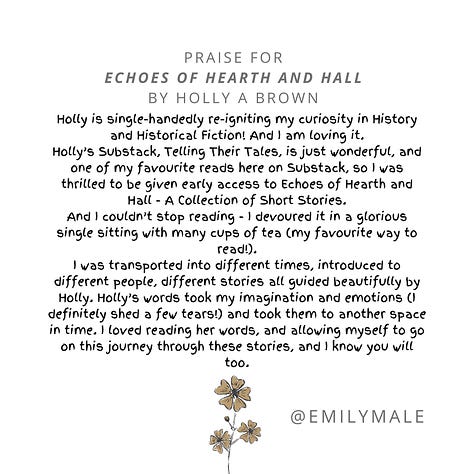
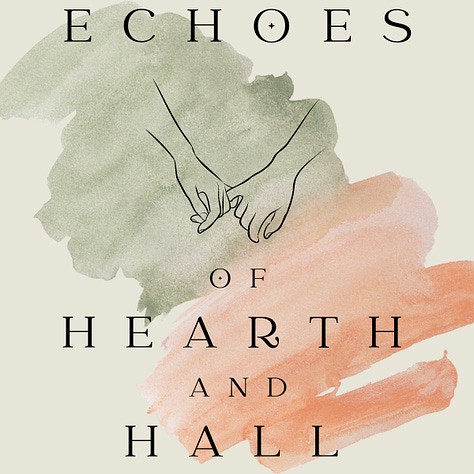
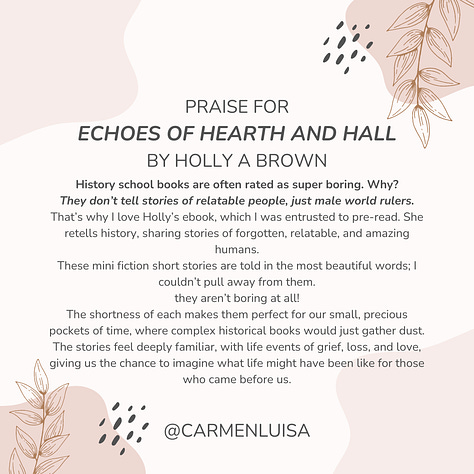
Related Links
Taken from Robin’s Substack bio.


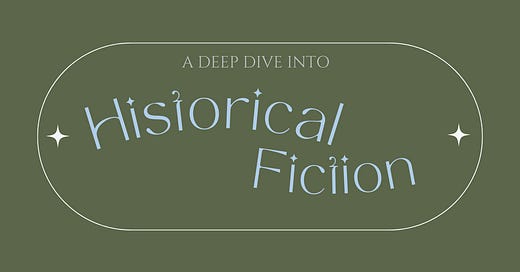




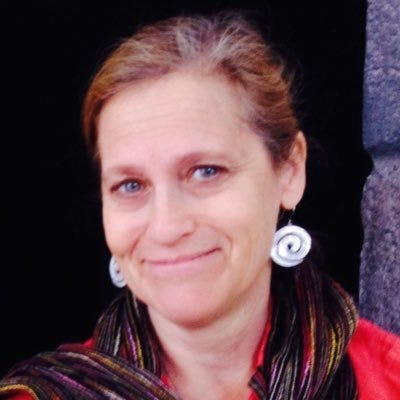

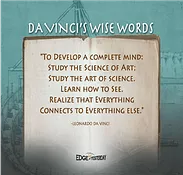

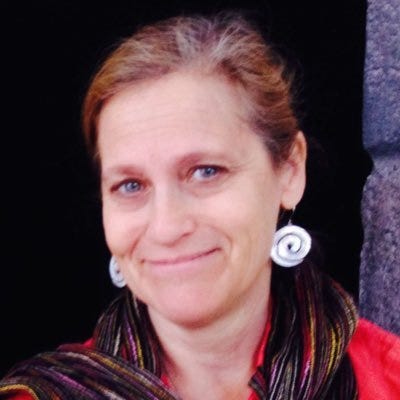

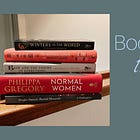



Thanks Robin for sharing your story! I found it so inspiring as a writer aiming for publication one day.